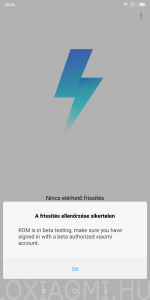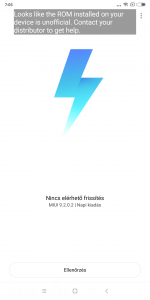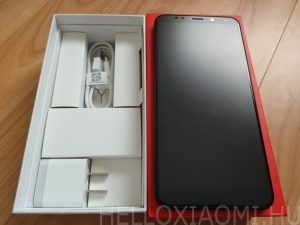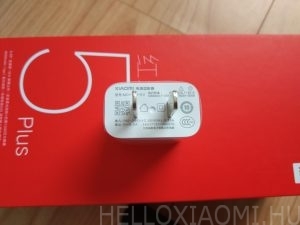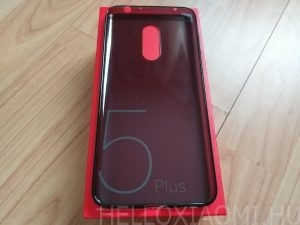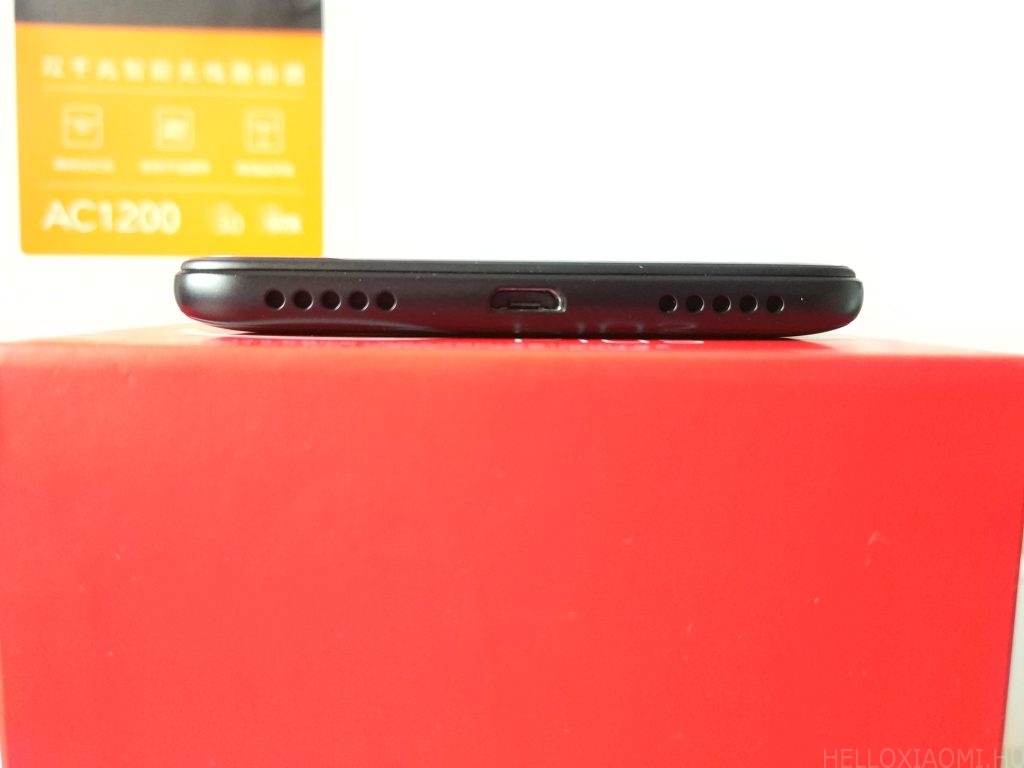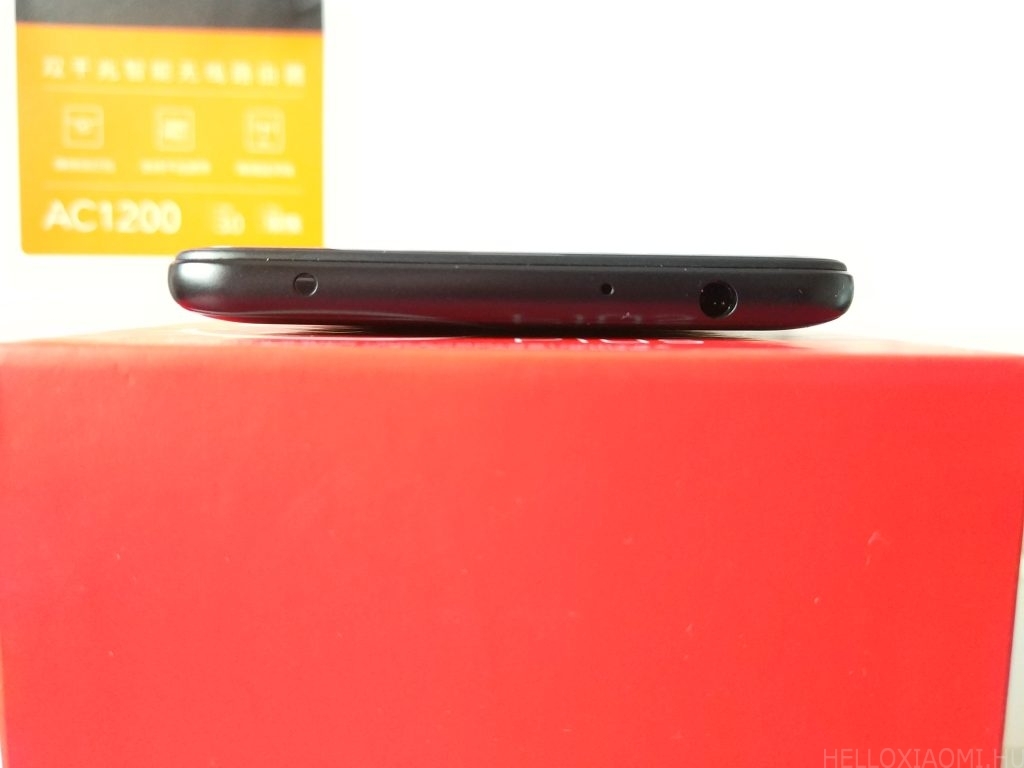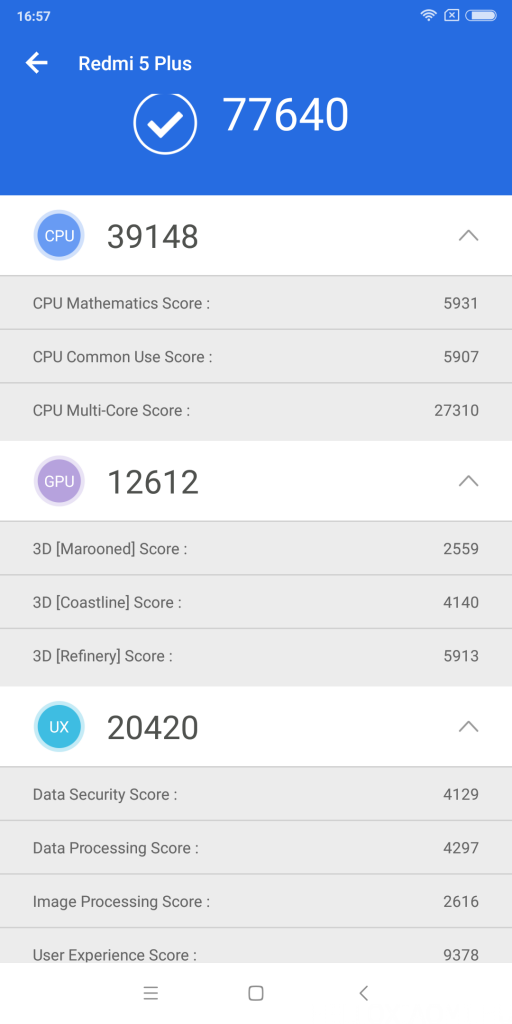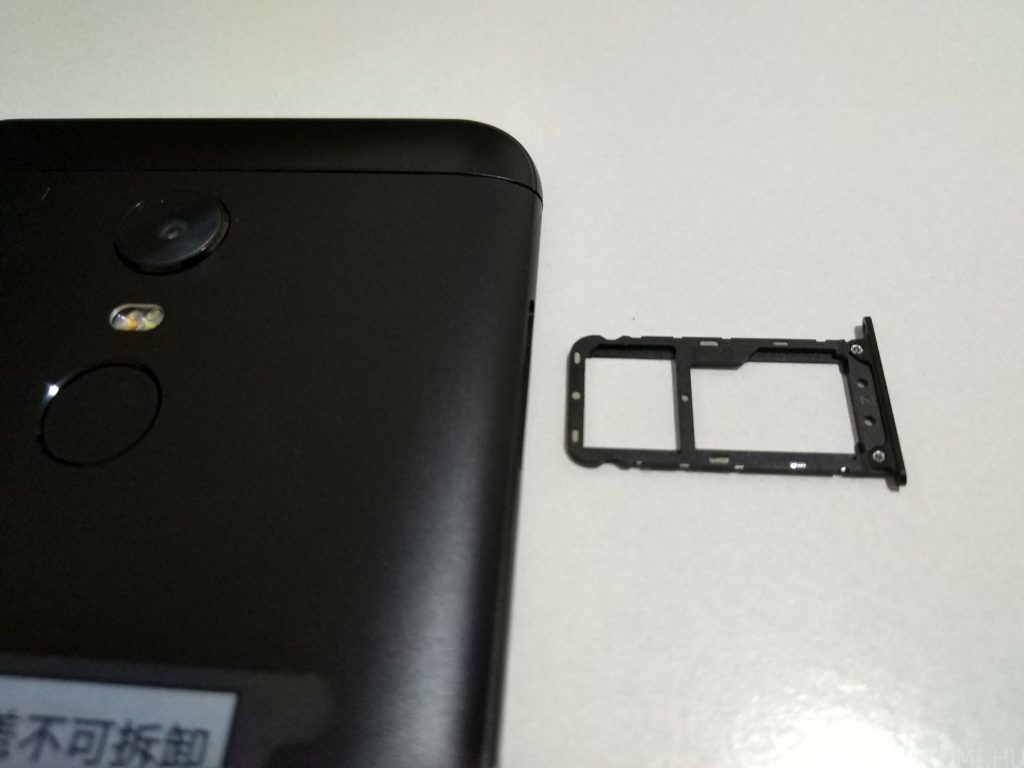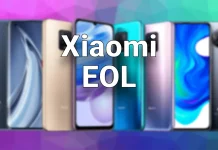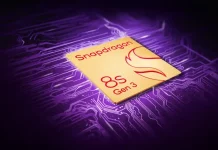Finally, I got the Xiaomi Redmi 5 Plus on a stable global rom, after several days and weeks of waiting, I was able to start with a rom that was worth dealing with. As many of you may or may not know, but then, you will now, the Redmi 5 Plus came from China with a cool system, thanks to Chinese webshops, that was practically non-existent. Everyone rightly assumed that the webshop rom craze was starting again and it seemed a bit true. But on closer inspection, the shops got hold of the closed beta global stable rom, which was released for internal testing only and only those who had the right to it were allowed to have it. Now no one but them could have it, only the factory Chinese/English system. Every Redmi 5 Plus owner was confronted with the following caption if this rom was originally on it:
So you could not update it, open it or do anything with it. Then the newer stable recovery ROMs came out, the ZIP files that could theoretically be installed with the Update application. Only the publisher forgot to write that it was still a closed beta and could not be installed on it, and even with a closed bootloader, it was not even attempted. Those who tried got a nice full-screen half-burn. Since the phone wouldn't boot, the bootloader couldn't be opened, so MiFlash couldn't do anything with it and there was nothing left to do but to disassemble it and connect two small copper connectors to EDL mode, which allowed us to install the factory Chinese system. But even those who had foresight were not happy, as the phone is Chinese domestic, so Xiaomi limited the bootloader opening to Chinese only. What does that mean? Well, it means that you could only connect the phone to Mi Fios with a Chinese internet IP address to be able to open it. And here came the Swedish twist, how do we solve this? No problem, there's a fain app for Android that uses a Chinese VPN to spoof the system and Xiaomi's server sees that we're sitting in China and want to open from there. :D Check! You can download the app here: VPN Turbo the official factory stable global fastboot rom from. (Redmi 5 Plus Latest Global Stable Version Fastboot File Download) You can get all the help you need from on this section of the Hungarian forum.
To get ahead of all this hassle, we waited until the official system was released to test the "baby" in a way that everyone else could use it. Bootloader open, factory rom up, let's do it!
The box of the Redmi 5 Plus is in the usual Chinese domestic red colour, which is the national colour, and was originally called Red Rice, so they've stuck with that. The global version will arrive in the usual white box soon.
The box contains the usual stuff, a manual, silicone case, phone, charger, USB cable and SIM tray pin.
The mains charger has a maximum output of 2A and of course a Chinese connector, as it is only available in China so far. In Hungarian shops you can get either a good quality converter or a mains charger. The Micro-USB cable is the usual Xiaomi quality, short but durable.
The silicone case. Yes, it comes with it, as I mentioned above, but like the Mi6, Mix 2 and other thin, large or full-screen phones, it's a must-have for the Redmi 5 Plus. It's not that the phone slips in everyone's hands, but there's a slight bump on the back of the phone. The camera. In such a thin housing, you can't fit one here, unlike two on the Mi6, for example.
If you use the phone without the case, it will stick out there. If you put it on the desk and use it there, it will wobble if you press on the edge of the phone, which can be distracting when playing games or tapping on icons. But with the silicone case, it's perfectly avoidable:
And that brings us to the main main main feature of the phone, the screen. After the Mix series, this is the first Xiaomi phone to come with a full display, the first Redmi phone with an 18:9 aspect ratio and FHD+ resolution (1080 x 2160 px). During the test, Xiaomi left the matte film on top for several reasons. It doesn't shine so much and you can take photos/videos, it doesn't get damaged and a lot of people leave it on knowing that buying glass that fits just right is almost impossible. There is a plain protective film, but it only collects scratches instead of the display and is not impact resistant. So sorry, it stays a film.
As a result of screen resolution, more and more software manufacturers are starting to support resolution. From the coolest games, to YouTube, to user apps. Even with the Mix 2, it was so new that almost nothing outside of Xiaomi apps supported it, my favourite games would spill out or be smaller than the actual screen.
The screen brightness, for example when placed next to a Redmi Note 3, is stronger than older models, although it's a completely new screen technology, although the basic IPS LCD panel remains. Not to mention the fact that the Redmi 5 series' screen can even be woken up with a double screen!
The bottom of the phone has the same layout as the higher end, with ten holes arranged symmetrically. No, it's not stereo, nor would it make sense on a short side. The 5 holes on the left side are the microphone, although only one of those is the microphone, the other side is the speaker, and in the middle is the MicroUSB socket. The quality of the speaker is very impressive, with good dynamics, but when playing games and watching movies, the sound will be mono, but only from one side. When laid flat, there is no stereo sound like Mi6 and Mix 2.
On top, there's a 3.5mm Jack socket for everyone's pleasure. Next to it is the secondary microphone responsible for the famous Redmi noise cancellation and on the far left is the infra transmitter for remote control of our home devices. Coming back to noise cancellation, it was recently reported on the MIUI forum that the terrible sound pickup can be improved with a little bit of buffering. Visit the forum for more on this!
The Redmi 5 Plus is identical in performance to its predecessor, with the same Qualcomm Snapdragon 625, RAM/ROM, and fingerprint sensor. Basically, everything but the screen remains. So in terms of gaming experience and performance, we get almost the same as the Redmi Note 4/4X. I'll show you two of my favourite games, and then I'll show you the results measured with the new Antutu for the point fighters:
There is nothing to be ashamed of with this "small" phone. The games run fine, the apps and notifications are uninterrupted, and sometimes it even notifies me sooner than other phones I'm logged into. I'd say that so far I feel the same as I did with the Redmi 5A, I was expecting weaker, but I'm pleasantly disappointed.
The handling of the virtual buttons was another sour apple for me, it was a bit crude and sometimes clunky in the Mix 2 test, but since then the MIUI developers have stepped up to the plate and of course the new Android 7.1.2 base also contributes to the ease of use. Resizing the screen, that one-handed mode can now be used like a phone with a physical button, if you have small hands you can just swipe one and access everything on a screen up to 3.5″. To set up virtual buttons, go to Settings - More settings - Button functions & gestures. Short and long presses of buttons are more adjustable, in fact, many people have complained when switching to a Xiaomi phone that the usual button placement on our phone is the other way round compared to other devices and/or out of habit the left one is the Back button. Here's a good news, since it's virtual, it can be reversed to our liking.
Fingerprint reader is awfully fast, as we've come to expect from rear scanners. There's nothing good or bad to say about the buttons, neither hard nor soft as expected. There is an excellent feel for the click that indicates the button's function has been loaded. However, it is much harder to press in the case, requiring more pressure. Thanks to the 3.5mm Jack connector, it can be used with any decent earpiece, especially if you have a Mi headset, because thanks to MIUI9 and Android 7.1.2 base, you can set up all new Mi accessories with the Mi Music enhancement function.
I left the camera at the end. I won't bore you with the hyper-super daytime pictures, we all know that Xiaomi phones can take really good pictures and videos during the day, especially if you're a bit skilled. But at twilight, in the evening, at night, under room lights and with flash, many have already complained, so let's see how the 12MP Omnivision OV12A10 rear camera performs.




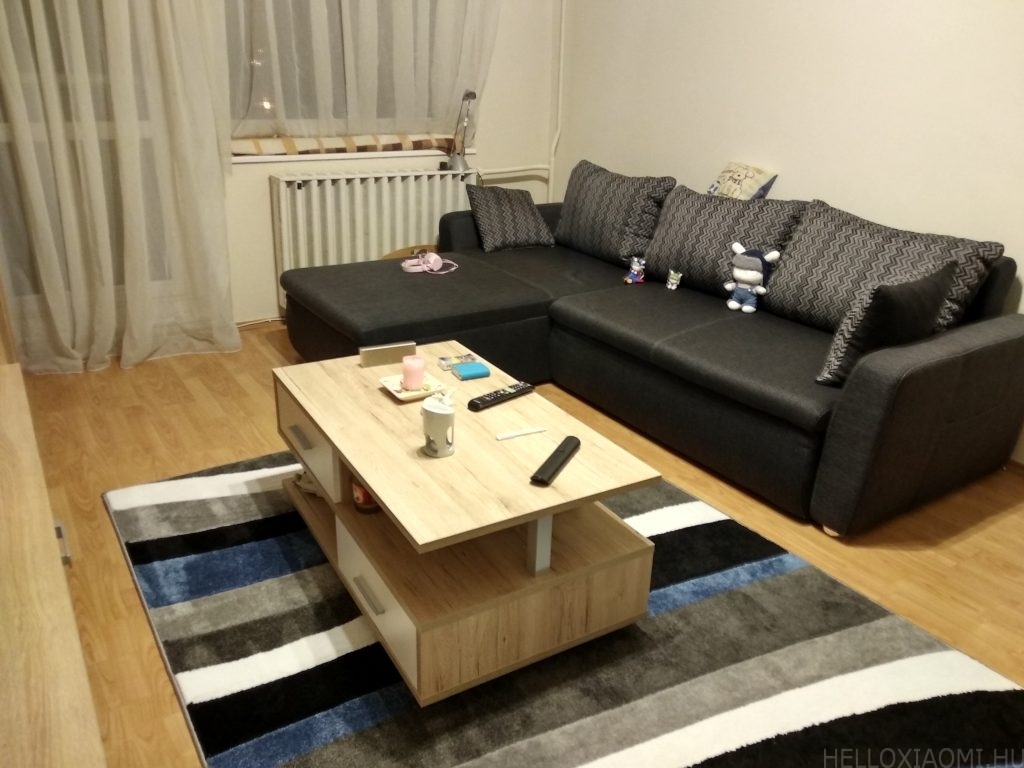

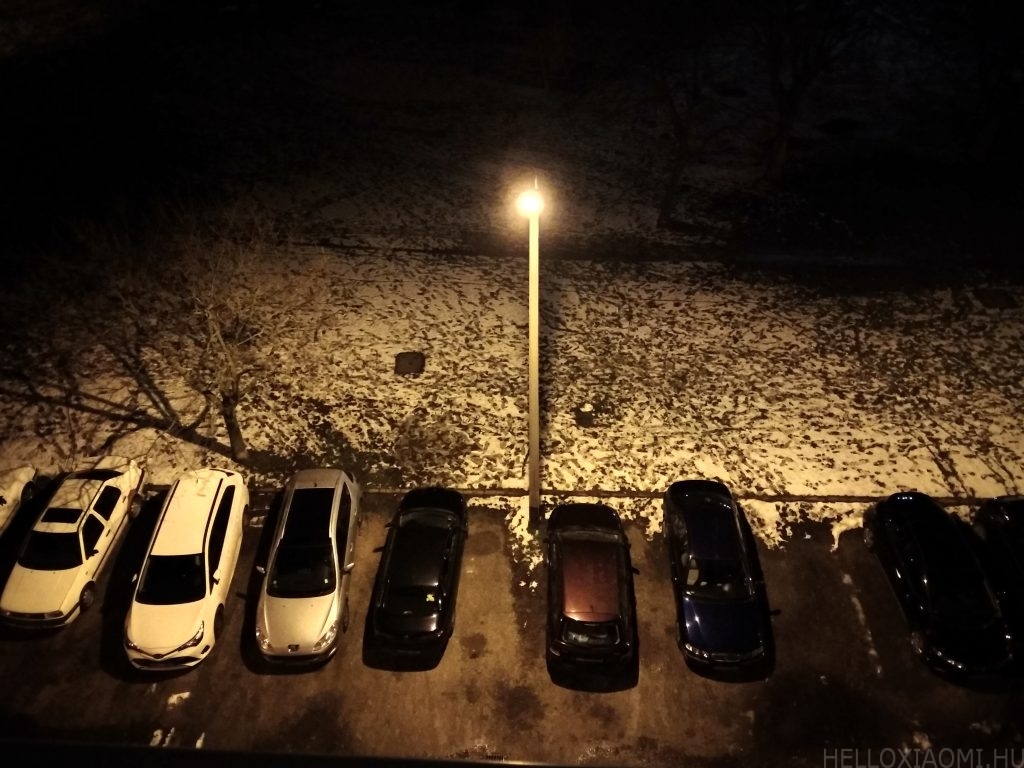


Of course, you can't miss out on the best camera feature of all, slow motion, which captures 120 frames per second. It's not super high quality, especially in the evening under the lights, but you can play with it during the day, we might even have a little competition on our Facebook page! :)
So you could say it's average. Not good, not bad, just right for the Redmi range. It's better than the Redmi 5A we tested last time, with the night video recording being the most noticeable difference. We'll be curious to see how the little brother processes in such an environment with a slightly weaker iron.
I think we've gone through all the important parts, I won't go into the in-depth raw details, you can find tests for all the parts on the Hungarian net with a few clicks. But I'll put the full specification here for the sake of order, so as not to spoil the front of the house.
| Design | |
| Size | 75.5 mm x 158.5 mm x 8.1 mm |
| Weight | 180 g |
| Frame size | 4 mm |
| Useful interface | 77% |
| Material from | Aluminium alloy |
| Available colours | black, blue, gold, pink |
| Display | |
| Display size | 5.99″ |
| Display type | LCD IPS |
| Display resolution | 1080 x 2160 px |
| Pixel density | Very high density, 409 pixels per inch |
| Other display data | 2.5D Rounded glass, 450 cd/m2, 84% NTSC, Capacitive, Colour LED notification, Multi-touch, Scratch-resistant |
| Performance and hardware | |
| Processor | Qualcomm Snapdragon 625 MSM8953 |
| CPU | ARM Cortex-A53 , 8×2.0 GHz |
| Processor cores | Octa-Core |
| Processor frequency | 2.0 GHz |
| Graphics processor | Qualcomm Adreno 506 |
| Memory | 3 GB |
| Antutu test result | 77.640 (Antutu v7) |
| Repository | 32GB |
| Sensors | Fingerprint sensor, accelerometer, light and proximity sensor, gyroscope, Hall sensor |
| Memory card | Expandable to accommodate the second SIM card |
| Main camera | |
| Resolution | 12MP |
| Sensor | Omnivision OV12A10 |
| Type | CMOS |
| Aperture | f/ 2.2 |
| Flash | Dual LED |
| Services | Autofocus, continuous shooting, digital zoom, HDR, ISO adjustment, face detection, front flash, manual focus, panorama mode, white balance adjustment, timer, touch focus, location information capture, scene mode |
| Slow motion video | 120.0 fps |
| Selfie camera | |
| Resolution | 5mpx |
| Contacts | |
| Networks | 4G LTE: 1800, 1900, 2100, 2300, 2500, 2600, 850, 900MHz 3G: 1900, 2100, 850, 900MHz 2G: 1800, 1900, 850, 900MHz |
| SIM card | Dual SIM, Dual Standby (Nano SIM) |
| Wi-Fi | 802.11b 802.11g 802.11n Wi-Fi Direct, Wi-Fi Display, 2.4 and 5GHz |
| Bluetooth | Bluetooth 4.2, A2DP, HID, LELow low power consumption |
| Navigation | A-GPS, Beidou, GLONASS, GPS |
| USB | MicroUSB, On-The-Go (OTG) |
| SAR | – |
| Other | Audio Jack, FM Radio, PC Sync, Infrared, OTA Upgrade, VoLTE |
| Battery | |
| Capacity | Built-in 4000 mAh, 2A fast charge |
| Type | Li-Polymer |
| Software | |
| Operating system | MIUI 9.2 Global Stabil, Android 7.1.2 Nougat |
Speaking of the SIM tray. Unlike the Redmi 5A, the Redmi 5 and Redmi 5 Plus only have one tray, which can hold either 2 Nano SIMs or a SIM and a MicroSD card. Well, again, this becomes a big dilemma if someone has 2 cards and is thin on 32GB of storage.
And of course the damn B20, which is not in this version. What you can get at the moment (08.02.2018) is neither Global or International, they advertise it as such, don't be fooled!!! It will come. Soon...
In summary, the Redmi 5 Plus is 8-10mm taller than its predecessors in size, but no wider, and just as good to hold if you like big-screen phones. Playing games, watching videos, reading (there's a reading mode) or even browsing on the large screen is a comfortable and fun experience. The processor is good, it holds its own every day use, the battery is well stocked, the 4000 mAh lasts up to 2 full days of average use, camera is adequate. One thing not the freshest is the light sensor. This can even be attributed to the first public release system, if you turn off the light, it burns out your retina for another 5 seconds or so, if you used it with a light on, but back on, it reacts almost instantly. I have not encountered any other problems worth mentioning.
Where is the phone available? In China, 100 places, for a good price, but expect the hassle I described at the beginning of this test. You can't be sure you won't get it the same way here and you may have to run around to get it to work, but if you choose a reliable source you shouldn't have a problem. I tried to get Uncle Gugli to visit Hungarian shops and the selection is pretty poor. Now if I may I would not list Pistike's 2 GSM shops, they don't even know what they sell, it's all about profit and this is going to be a place for advertising again, but there is one reasonable shop to be found. XiaomiShop, to everyone's great delight. :) By the way, don't be put off by the few bad news, it stuck with them from Christmas 2016, since then the team has expanded with people who are a guarantee for customers. Anyway, from there you get a verified phone with the new system for round 63.900 forints. You can buy it here.



















